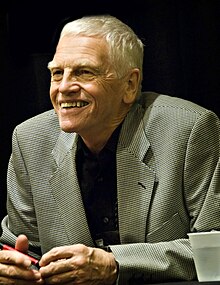 |
| Official cover for The Tooth Tattoo |
Yet, perhaps as is (again) characteristic to crime novels,
not much is what it seems; a statement applicable both plot-wise and
stylistically. The novel starts out as such:
“Eleven-thirty at night, sweaty in his evening suit and shattered after a heavy night playing Rachmaninov, Mel Farran plodded out of the artists' exit on the south side of the Royal Festival Hall. Good thing his legs didn't need telling the way to
Waterloo station and the tube. He'd done it a thousand times. Rachmaninov
was said to be the ultimate romantic—miserable old git. The six foot scowl,
as Stravinsky called him, had been a pianist through and through. He worked
the string section like galley slaves to show off the joanna man, and Mel
Farran was a viola-player, so thank you, Sergei.”
 |
| Soho Crime author, Peter Lovesey |
It is apparent straight from the beginning that Lovesey
holds no pretense. For all we know, we are as good as sitting in a theater seat
watching the scene unfold in front of us with Lovesey right beside us, in whispering
the narrative in our ear as it goes. It is a refreshing way to read, to say the
least, and impressive in its let-me-guide-you-while-you-lead mentality.
The accessibility of Lovesey’s writing is only furthered
by his cavalierness in the face of ostentation – which is perhaps apparent from
the passage above. There’s much of it to spare in the elite world of classical
music (at least in Lovesey’s world), and the fact that he takes the back-door
perspective through the eyes of the “lowly” viola player, as opposed to the
star pianist, says a lot about his character as an author. It’s one of the many
things that truly solidifies a readership for an author, and is yet another
testament to Soho’s outstanding judgment in choosing their authors.
View the comprehensive excerpt from The Tooth Tattoo by visiting the book's page at the Soho website. You can find more of Peter Lovesey's titles at his page on the Soho website as well.
- Colleen McClintock
- Colleen McClintock








